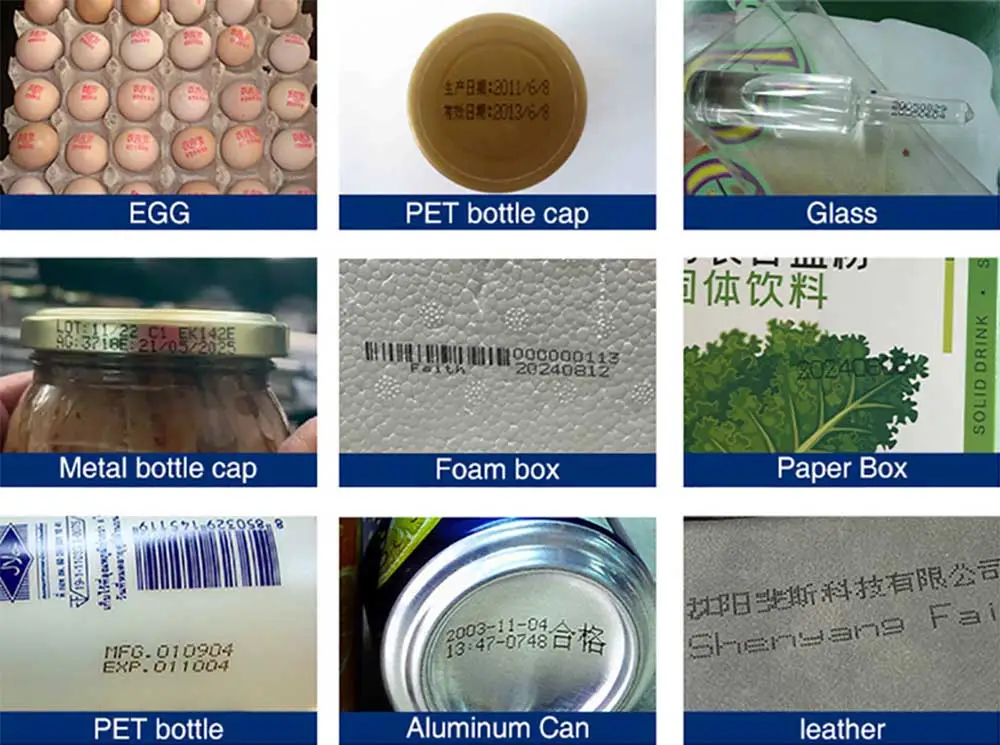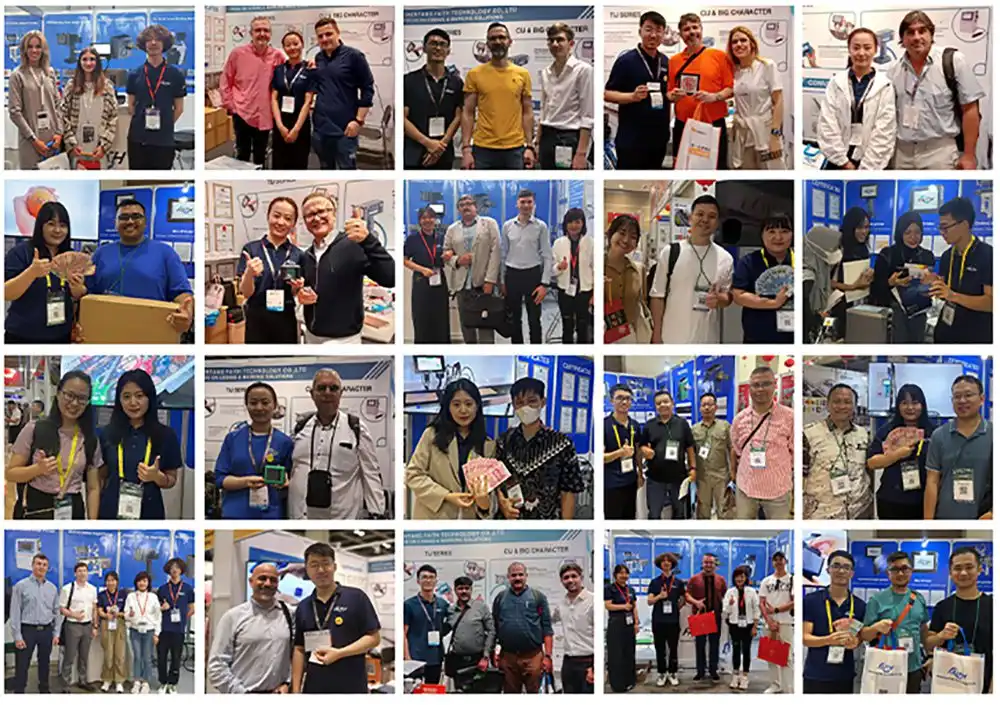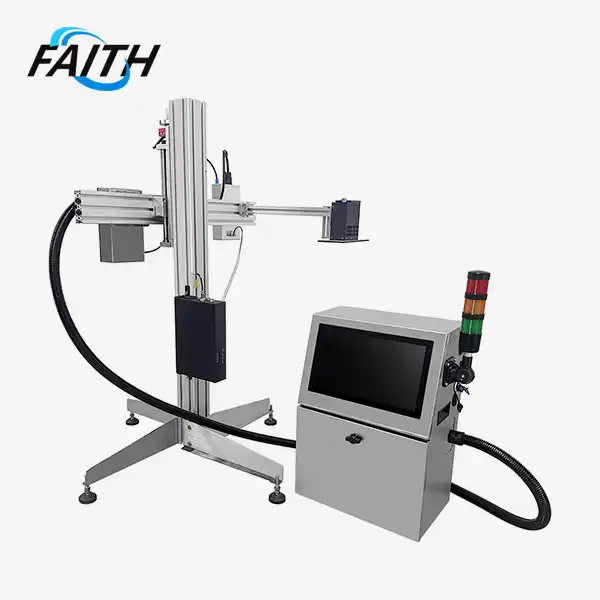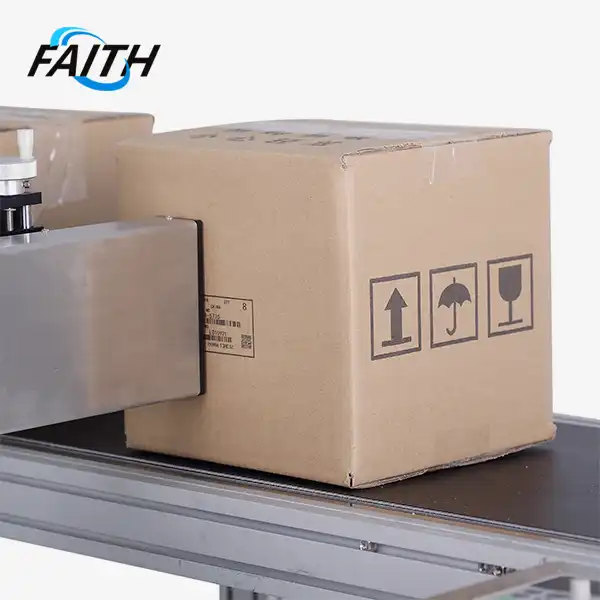Speed and Resolution in CIJ Printing: What You Should Know
Continuous Inkjet (CIJ) printing technology has revolutionized the industrial coding and marking landscape, offering unparalleled speed and resolution capabilities. In the realm of wholesale continuous inkjet printing, understanding the interplay between speed and resolution is crucial for optimizing production efficiency and product quality. CIJ printers can achieve remarkable printing speeds of up to 576m/min while maintaining high-resolution output, making them ideal for fast-paced production lines across various industries. This article delves into the key aspects of speed and resolution in CIJ printing, providing valuable insights for businesses seeking to enhance their coding and marking processes.
The Technological Marvel of CIJ Printing Systems
CIJ printing systems represent a technological marvel in the world of industrial coding and marking. These non-contact printing solutions have gained immense popularity due to their versatility and reliability. At the heart of CIJ technology lies a continuous stream of electrically charged ink droplets, precisely controlled to create high-quality prints on a wide range of substrates.
The remarkable speed of CIJ printers, capable of reaching 576m/min, is a game-changer for high-volume production environments. This impressive velocity is achieved through advanced printhead designs and sophisticated ink management systems. The ability to maintain consistent print quality at such high speeds is a testament to the engineering prowess behind modern CIJ printers.
Precision in Motion: The CIJ Printhead
The printhead is the cornerstone of CIJ printing technology. It houses the nozzle from which the continuous stream of ink droplets emerges. The precision of the printhead design directly influences both the speed and resolution of the printing process. High-end CIJ printers utilize advanced piezoelectric technology to generate and control the ink droplets with remarkable accuracy.
The size of the nozzle orifice plays a crucial role in determining the resolution of the print. Smaller nozzle diameters produce finer droplets, enabling higher resolution prints. However, there's a delicate balance to strike, as smaller droplets may limit the maximum printing speed. Manufacturers of wholesale continuous inkjet printing systems invest heavily in research and development to optimize this balance, pushing the boundaries of what's possible in terms of both speed and resolution.
Ink Formulation: The Unsung Hero
While much attention is given to the mechanical aspects of CIJ printing, the role of ink formulation in achieving high-speed, high-resolution prints cannot be overstated. Modern CIJ inks are engineered to meet specific performance criteria, including rapid drying times, excellent adhesion properties, and resistance to environmental factors.
The viscosity and surface tension of the ink must be precisely controlled to ensure optimal droplet formation and placement. Inks designed for high-speed applications often incorporate fast-drying solvents and specialized pigments to prevent smudging or bleeding at elevated production speeds. The diverse range of ink types available, including those with high adhesion, migration resistance, and high-temperature resistance, allows for tailored solutions across various industrial applications.
Balancing Act: Speed vs. Resolution in CIJ Printing
Achieving the perfect balance between speed and resolution is a constant challenge in the world of continuous inkjet printing. While high-speed printing is essential for meeting production demands, maintaining print quality and legibility is equally crucial. This delicate balancing act requires a deep understanding of the interplay between various printing parameters.
One of the key factors influencing this balance is the number of printing lines. CIJ printers typically offer the flexibility to print between 1 to 5 lines of text or code. As the number of lines increases, the complexity of the print job grows, potentially impacting the maximum achievable speed. However, advanced CIJ systems are designed to optimize performance across various print configurations, ensuring minimal compromise between speed and quality.
Resolution Metrics in CIJ Printing
In the context of CIJ printing, resolution is often expressed in terms of dot matrix configurations. Common font sizes range from 5x6L to 32x32B, with 'L' and 'B' denoting 'Light' and 'Bold' respectively. Higher matrix configurations, such as 24x24 or 32x32, offer increased detail and clarity, particularly beneficial for printing complex logos, QR codes, or barcodes.
The choice of resolution depends on several factors, including the substrate material, the viewing distance of the print, and the specific requirements of the application. For instance, printing on fast-moving cartons may require a different resolution setting compared to marking on stationary glass surfaces. The flexibility to adjust resolution settings on-the-fly is a hallmark of advanced CIJ printing systems, allowing for optimal performance across diverse production scenarios.
Speed Optimization Techniques
Maximizing printing speed without compromising resolution involves a multifaceted approach. Modern faith printers employ various techniques to push the boundaries of speed while maintaining print quality:
- Dynamic drop placement: Advanced algorithms calculate the optimal trajectory for each ink droplet, accounting for the speed of the substrate and environmental factors.
- Multi-line printing optimization: Intelligent software adjusts the printing parameters to maintain speed even when printing multiple lines of text or complex codes.
- Adaptive ink control: Real-time monitoring and adjustment of ink properties ensure consistent droplet formation at high speeds.
- Enhanced drying mechanisms: Integration of drying aids, such as hot air blowers or UV curing systems, allows for faster ink setting on challenging substrates.
These optimization techniques, combined with the inherent capabilities of CIJ technology, enable wholesale continuous inkjet printing systems to meet the demanding requirements of modern production environments.
Applications and Considerations in High-Speed CIJ Printing
The versatility of CIJ printing technology makes it suitable for a wide range of applications across various industries. From food packaging and pharmaceutical labeling to automotive parts marking and cable coding, CIJ printers offer a reliable solution for high-speed, high-resolution printing needs.
In the food and beverage industry, for example, CIJ printers are widely used for printing expiration dates, lot numbers, and traceability codes on packaging materials. The ability to print at speeds of up to 576m/min ensures that even the fastest production lines can maintain efficient coding processes without creating bottlenecks.
Substrate Compatibility and Ink Selection
One of the key advantages of CIJ printing is its ability to print on a diverse range of substrates, including cartons, plastics, metals, glass, and even porous materials. However, achieving optimal results at high speeds requires careful consideration of substrate properties and ink selection.
For instance, printing on non-porous surfaces like glass or metal may require specialized inks with enhanced adhesion properties. Similarly, applications involving high-temperature environments or exposure to chemicals may necessitate the use of inks with specific resistance characteristics. The wide array of ink types available, including food-grade and oil-resistant formulations, allows for tailored solutions across diverse applications.

Environmental Considerations
The operating environment plays a crucial role in the performance of continuous inkjet printing systems, particularly when pushing the limits of speed and resolution. Optimal performance is typically achieved within a temperature range of 0-45°C and humidity levels between 30-70% RH. Deviations from these conditions may require adjustments to printing parameters or the use of specialized inks to maintain print quality.
In challenging environments, such as cold storage facilities or high-humidity production areas, advanced CIJ printers incorporate features like temperature-controlled ink systems and automatic viscosity adjustment to ensure consistent performance. These adaptations enable high-speed, high-resolution printing across a broad spectrum of industrial settings.

FAQs
Q: What factors affect the print quality in high-speed CIJ printing?
A: Print quality in high-speed CIJ printing is influenced by several factors, including ink formulation, nozzle design, substrate properties, and environmental conditions. Proper optimization of these parameters is crucial for maintaining high resolution at elevated speeds.
Q: Can CIJ printers maintain high resolution when printing multiple lines of text?
A: Yes, advanced CIJ printers are designed to maintain high resolution even when printing multiple lines. However, the maximum achievable speed may be slightly reduced as the complexity of the print job increases.
Q: How does substrate material affect the choice of ink in CIJ printing?
A: The substrate material significantly influences ink selection. Non-porous surfaces may require specialized inks with enhanced adhesion properties, while porous materials might need fast-drying formulations to prevent bleeding or smudging.
Conclusion
The realm of wholesale continuous inkjet printing continues to evolve, pushing the boundaries of speed and resolution in industrial coding and marking applications. By understanding the intricate balance between these two critical factors, businesses can optimize their production processes and ensure consistent, high-quality product identification. As technology advances, we can expect even greater achievements in CIJ printing capabilities, further enhancing its role as a vital tool in modern manufacturing and packaging operations.
For more information on industrial UV inkjet coding and traceability system solutions, including CIJ printers tailored to your specific needs, please contact us at sale01@sy-faith.com. Our team of experts is ready to help you find the perfect solution for your high-speed, high-resolution printing requirements.
References
1. Johnson, M. (2022). Advancements in Continuous Inkjet Technology: Speed and Resolution Innovations. Journal of Industrial Printing, 45(3), 112-128.
2. Smith, A., & Brown, B. (2021). Optimizing CIJ Printing for High-Speed Production Environments. International Conference on Marking and Coding Technologies, 78-92.
3. Thompson, R. (2023). Ink Formulation Strategies for High-Resolution CIJ Printing. Industrial Inks and Coatings Quarterly, 18(2), 45-61.
4. Lee, S., & Park, J. (2022). Environmental Factors Affecting CIJ Print Quality: A Comprehensive Review. Journal of Manufacturing Processes, 56, 234-250.
5. Garcia, L. (2023). The Future of CIJ Printing: Balancing Speed and Resolution in Industry 4.0. Advances in Industrial Marking Systems, 7(1), 15-29.
Online Message
Learn about our latest products and discounts through SMS or email
_1756276903932.jpg)


